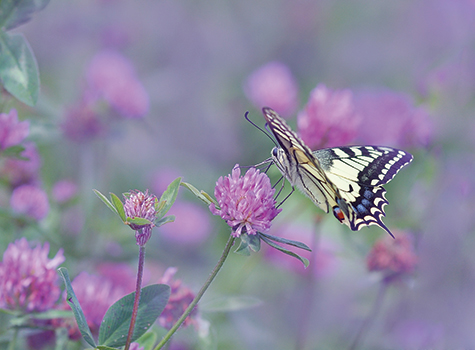In Hindi, there is an idiom, ‘Ghar ki murgi, daal barabar’. Somehow, this phrase demotes the humble daal (pulses and lentils) as being inferior to the chicken.
However, all recent research shows that animal proteins are harmful for our health, and we should all be eating more whole grains and beans. The benefits of beans and pulses are not just limited to individual health.
Pulses not only sustain and nourish people with their high nutritional content, but they also sustain the land by regenerating the soil, and save water by requiring little water input. Thus, daal sustains the life and energy of the farmer, the land, and the water.
The 68th United Nations General Assembly has declared 2016 as the International Year of Pulses (IYP) to heighten public awareness of the nutritional, economic, and environmental benefits of pulses and legumes.
The key messages of the campaign are as follows:
1. Pulses are highly nutritious. Pulses are an important source of fiber, amino acids, vitamins, minerals, and plant-based protein.
2. Pulses are economically accessible and contribute to food security at all levels. They are inexpensive to buy and they have a long shelf-life.
3. Pulses have important health benefits. They keep you satisfied for longer than many other foods. Recent studies have found that eating a meal with pulses and beans made study participants feel fuller than a meal without pulses. This can help with balancing blood sugars and thus manage chronic diseases such as diabetes, coronary conditions and cancer.
4. Pulses foster sustainable agriculture and contribute to climate change mitigation and adaptation. Pulses have a positive impact on the environment because they fix nitrogen in the soil, increasing soil fertility.
5. Pulses promote biodiversity. They also help increase organic matter and microbial biomass and activity (e.g. bacteria, fungi) in the soil. For this reason, they play a key role in crop rotation and the health of the planet.
To celebrate the International Year of Pulses, there are many campaigns and competitions being held worldwide. India is the world’s largest producer, importer and consumer of pulses, and has enthusiastically announced several initiatives to participate.
The Pulses Conclave: India Pulses and Grains Association will host a three day mega event from 17 Feb 2016 – 20 Feb 2016 for the global pulses trade and industry in Jaipur. Over 800 delegates from India and across 24 countries including Australia, USA, Canada, Russia, Spain, Pakistan, Kenya, Myanmar etc., are expected to participate in the Conclave.
The International Conference on Pulses for Nutritional Security and Agricultural Sustainability will be held on November 12, 2016 at New Delhi, India which will draw together the key players to further the contributions pulses make to health, nutrition, and sustainability.
But the first to participate and most vocal has been an NGO called Navdanya. It is an Indian-based non-governmental organization which promotes biodiversity conservation, biodiversity, organic farming, the rights of farmers, and the process of seed saving. Navdanya has helped set up 54 community seed banks across the country and trained over 500,000 farmers in “food sovereignty” and sustainable agriculture over the past two decades. Navdanya has also set up a learning center, Bija Vidyapeeth (School of the Seed), on its biodiversity conservation and organic farm in Doon Valley, Uttaranchal, north India. Navdanya claims to be a women-centered movement for the protection of biological and cultural diversity.
They started a campaign called “Pulse of Life,” which held an event on January 6, 2016. The Pulse of Life feast is an inspiring one on how to add pulses to your daily life. The mouthwatering menu included the following:
Navdanya Pulse Feast 2016
Salad:
• Sprouted Whole Pulse salad – Sprouted Moong and Moth mixed with fresh salad vegetables & lime
• Nine Bean Salad – Array of colorful & nourishing pulses: Rajma, Lobiya, Chana, Whole Urad, Whole Moong, Navrangi, Geheth, White & Black Bhatt seasoned with fresh herbs
Main Course:
• Rajma Chawal – spicy rajma/kidney beans with steamed aromatic Basmati rice
• Chholey Bhatturey – Kabuli Chana cooked in Indian spices and served with roasted wheat bhatturey
• Kadhi & Bajra Roti – Besan blended with curd and seasoned with Indian spices accompanied with a winter special bajra roti.
• Geheth stuffed kachodi – Nutrition packed pulse, Geheth, mixed with delicate Indian spices and stuffed in an Indian kachodi
• Fermented dal Idli – Fermented urad dal & rice cakes steamed and served with Indian arhr dal sambar and chickpea coconut chutney
• Fermented dal Dosa – Crispy Dosa made with fermented urad dal and rice and served with arhr dal sambar and chickpea coconut chutney
• Rajasthani mixed dal & Missi roti – Urad, Moong and Masoor dal served with bread made with chana, Jaew, and gehun
• Masoor dal khichdi – Masoor dal and rice cooked together with simple Indian spices
Dessert:
• Besan Barfi
• Moong dal halwa
Feeling inspired?
Here are some ideas for ways you can help promote the 2016 International Year of Pulses.
1. Eat more pulses! Include pulses more often in your daily diet and in your weekly meal planner, but also choose pulses at restaurants
2. Bring pulses into gatherings with family, friends and colleagues
3. Be social and talk about it! Post your pulse dishes, use the hashtags #LovePulses #PulseFeast #IYP2016 and follow us on Facebook, Twitter, YouTube, Instagram, and Pinterest.
4. Do you have a blog? Include a link to our website in it. Include links to iyp2016.org and Pulses.org in your social media posts!
5. Donate pulses to your local food bank.
We are what we eat! Food should be good for the people and good for the planet. So let that murgi (chicken) live in peace and help yourself and the planet by eating more daal!
Posted: Friday, February 5, 2016



